Caring for your skin is more than just a cosmetic practice; it is a profound form of self-respect that resonates with the deeper layers of holistic body care and daily wellness rituals. In recent years, the concept of a structured yet accessible 5 step skincare routine has gained recognition among dermatologists and wellness experts alike, not just for its simplicity but for its remarkable ability to yield long-term results. By following a consistent five-step process, individuals can support their skin’s natural rhythm, improve tone and texture, and boost both internal and external vitality. This article explores each step of the routine in depth, offering advanced insights and practical guidance while embedding the routine within the broader context of body care and overall well-being.
You may also like: The Essential Rituals for a Natural Skincare Routine That Supports Whole-Body Wellness

Understanding Holistic Body Care Through the Skin
When we speak of holistic body care, we are referring to an integrative approach that acknowledges the interconnectedness of the body, mind, and environment. The skin, as the body’s largest organ, plays a vital role in this interplay. It acts as both a physical barrier and a sensory interface with the world, constantly reflecting internal imbalances and external influences. Thus, any approach to skincare that seeks long-term impact must begin with a foundational understanding of how the skin mirrors our overall health.
Modern skincare routines are no longer limited to topical applications alone. The five-step approach intersects with dietary habits, sleep patterns, hydration, mental health, and environmental exposure. A person dealing with chronic stress, poor sleep hygiene, or nutritional deficiencies will likely experience breakouts, dullness, or premature aging, no matter how advanced their serums or creams may be. Holistic body care means ensuring that skincare is both a surface and systemic pursuit, grounded in mindfulness and supported by evidence-based practices.
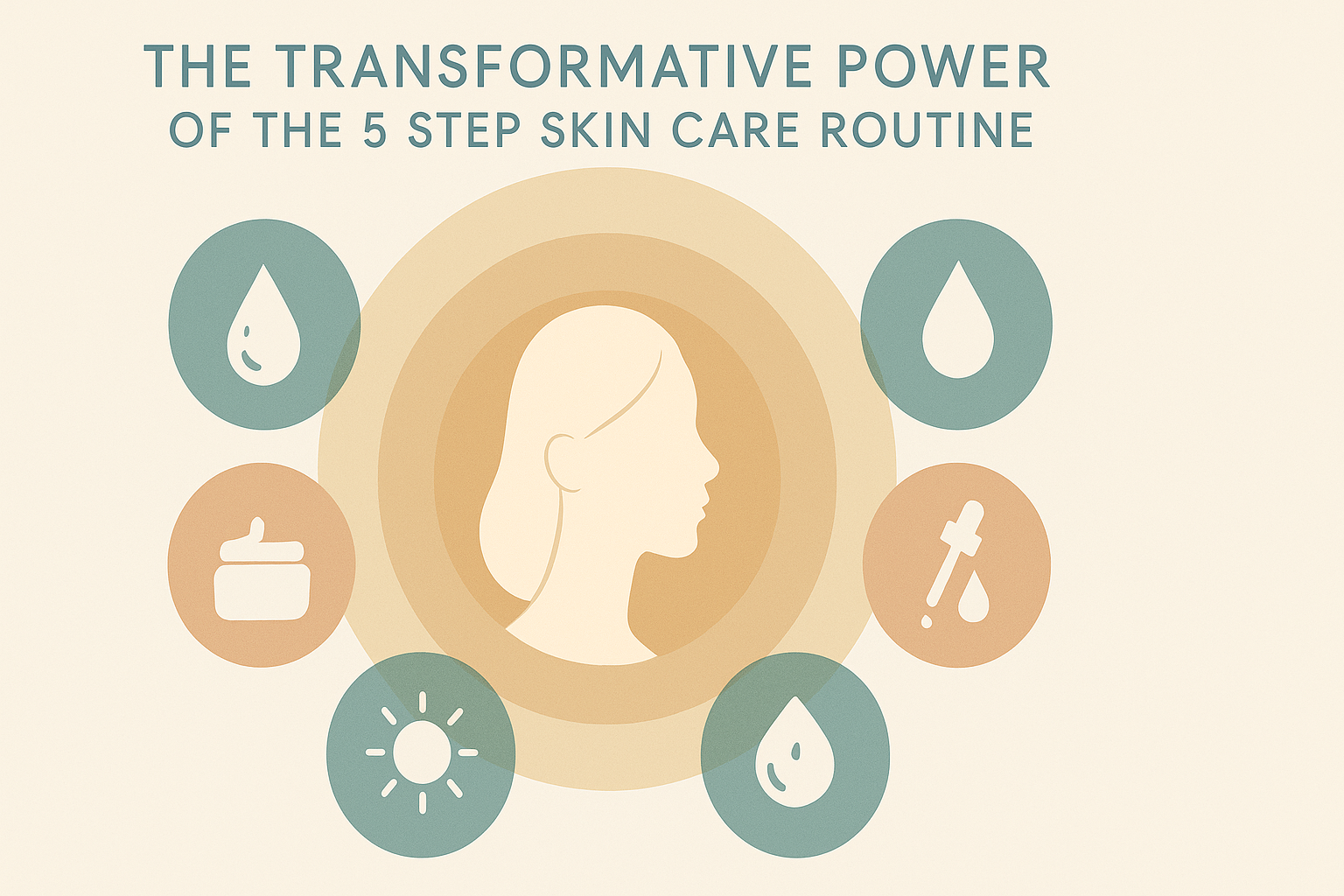
The Transformative Power of the 5 Step Skin Care Routine
At the core of any enduring skincare philosophy lies consistency. A well-designed 5 step skincare routine delivers structure while allowing enough flexibility to personalize based on skin type, season, or age. The five essential steps include cleansing, toning, treating, moisturizing, and sun protection. Each of these components serves a unique function and builds upon the previous step to create a layered defense system that nourishes and fortifies the skin barrier.
The transformative potential of this routine lies in its ability to establish equilibrium. Skincare products are only as effective as their user’s commitment and knowledge. With regular application and awareness of each product’s purpose, users can begin to witness reduced inflammation, smoother texture, better hydration, and a balanced microbiome. Furthermore, this routine trains users in the art of self-care: carving out a few moments twice a day to connect with their bodies, reduce stress, and engage in rituals that reaffirm self-worth.
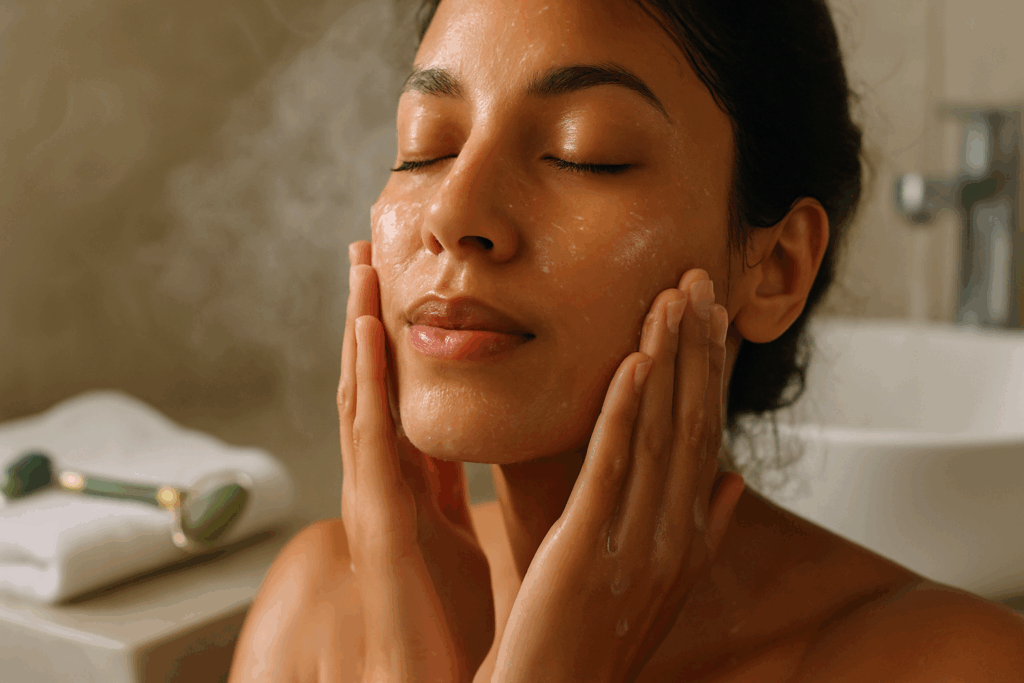
Cleansing: The Ritual of Renewal
The first and arguably most critical step in any 5 step skin care routine is cleansing. This act of washing away dirt, sebum, makeup, pollutants, and dead skin cells is far more significant than it may appear at first glance. A proper cleanse is not simply about achieving a squeaky-clean surface but about preparing the skin for the active ingredients that follow. When pores are clear and the skin is not burdened by residues, toners, serums, and moisturizers can penetrate more effectively and perform at optimal capacity.
Modern cleansers come in various forms, including gels, oils, balms, and micellar waters. The selection should be based on skin type and condition. For example, oily and acne-prone skin may benefit from a salicylic acid-based gel, while dry or sensitive skin may require a hydrating balm rich in ceramides and lipids. It’s essential to understand that over-cleansing or using harsh surfactants can disrupt the acid mantle and strip the skin of its protective oils, leading to inflammation or even rebound oil production.
Cleansing also offers a psychological benefit. The act of massaging the face in gentle, circular motions activates lymphatic drainage, stimulates circulation, and signals the body to transition from external activity to internal calm. For many, this is the beginning of their morning or evening body and wellness ritual, setting the tone for mindfulness and restoration.
Toning: Recalibrating the Skin’s Natural pH
Toners are often misunderstood or dismissed as an unnecessary step, but in reality, they serve a nuanced role in recalibrating the skin’s pH, which can be disrupted by water hardness and cleansing agents. Healthy skin typically maintains a pH between 4.7 and 5.75, favoring a slightly acidic environment that deters pathogenic bacteria and promotes enzyme function. A well-formulated toner helps restore this equilibrium while offering lightweight hydration and the first layer of actives to support skin repair.
Today’s toners are not the astringent, alcohol-laden solutions of the past. They are often infused with botanical extracts, peptides, humectants like hyaluronic acid, or mild exfoliants such as lactic acid. For individuals dealing with enlarged pores, dullness, or uneven tone, a toner containing niacinamide or green tea extract can help refine the skin and enhance clarity. For dry or reactive skin, toners with aloe vera, rosewater, or oat extract can soothe irritation and lock in moisture.
Toning acts as a bridge between cleansing and treatment. It ensures that the skin is both clean and prepped to receive more concentrated formulations. Just as importantly, toning can be an act of grounding. The cool sensation, combined with aromatic botanicals, engages the senses and deepens the user’s connection to their body care practice.
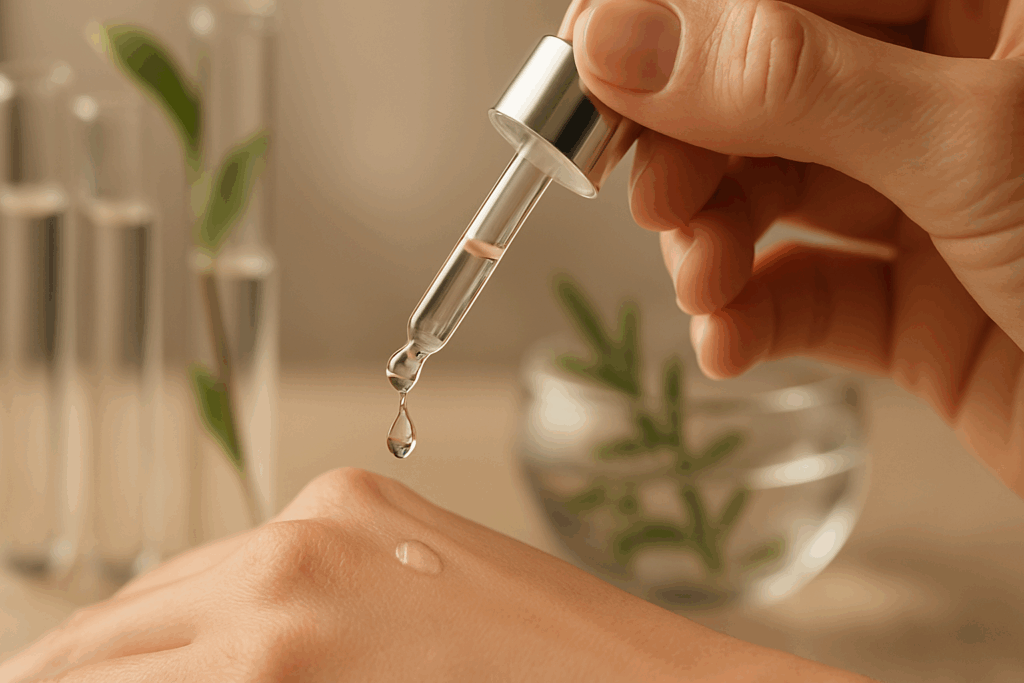
Targeted Treatment: The Science of Corrective Serums
No 5 step skincare routine would be complete without the inclusion of a targeted treatment step. This is where serums, ampoules, or boosters come into play. Unlike moisturizers that serve to seal and protect, these products deliver high concentrations of active ingredients directly into the skin. From vitamin C and retinol to peptides, ceramides, and alpha hydroxy acids, treatment serums address specific concerns such as hyperpigmentation, fine lines, acne, or dehydration.
The skin thrives on precision, and treatments should be selected based on clinical need rather than marketing hype. For instance, a person in their 20s struggling with post-acne marks might benefit from a niacinamide-rich serum combined with azelaic acid. Meanwhile, someone experiencing signs of aging in their 40s may turn to retinoids or growth factor peptides to stimulate collagen synthesis and improve elasticity.
Understanding the skin’s chronobiology is also essential. Some ingredients, like vitamin C, are best applied in the morning to neutralize oxidative stress, while others, such as retinol, are more suitable for nighttime use due to their photosensitizing properties. Integrating these into a 5 step skin care routine allows for a structured, intentional approach that builds cumulative benefits over time.
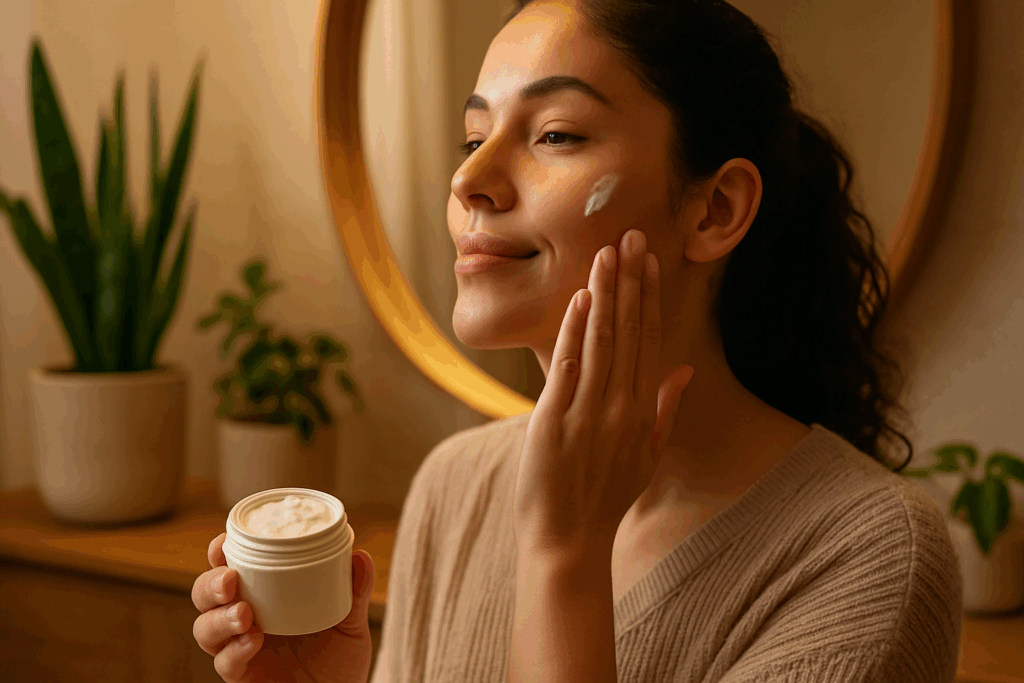
Moisturizing: Reinforcing the Skin Barrier
The role of moisturization in a skincare regimen cannot be overstated. This step not only hydrates the skin but also strengthens the lipid barrier that protects against environmental aggressors, allergens, and microbial invasion. A compromised barrier can result in transepidermal water loss (TEWL), inflammation, and sensitivity. The right moisturizer counteracts these issues by sealing in actives and maintaining the skin’s natural resilience.
Moisturizers vary widely in their formulation, ranging from lightweight gels to rich creams and occlusive balms. Each formulation contains a blend of humectants (like glycerin), emollients (such as squalane), and occlusives (like shea butter) in differing ratios depending on the intended skin type. For oily skin, a gel-based moisturizer with hyaluronic acid might suffice, while mature or dry skin may need a denser cream enriched with ceramides, cholesterol, and fatty acids.
Applying moisturizer serves as both a physical and symbolic act. It signifies the culmination of the nourishment process, the sealing in of intentional care, and the creation of a protective envelope. Moreover, the tactile engagement involved in massaging moisturizer into the skin has been shown to stimulate the vagus nerve, promoting parasympathetic relaxation and reinforcing the wellness component of skincare.
Sun Protection: The Daily Armor Against Aging and Disease
The final and most non-negotiable step in any 5 step skincare routine is the application of sunscreen. Despite its long-standing availability, sunscreen remains underutilized or misunderstood, especially in temperate climates or among darker skin tones. However, cumulative sun exposure is one of the leading contributors to premature aging, pigmentation disorders, and skin cancer. Daily application of a broad-spectrum sunscreen with SPF 30 or higher is a proactive health measure, not merely a cosmetic one.
Advances in sunscreen technology have produced lightweight, non-comedogenic formulations that integrate seamlessly into morning skincare routines. Mineral sunscreens with zinc oxide or titanium dioxide offer physical protection without irritating sensitive skin, while chemical sunscreens absorb UV rays and are often preferred for their elegant finish. Tinted sunscreens also provide additional coverage for those with hyperpigmentation or melasma.
Sun protection is not limited to sunny days at the beach. UVA rays penetrate glass and are present year-round, even on overcast days. Incorporating sunscreen into the daily routine sends a powerful message of self-preservation and awareness. It also completes the loop of the 5 step skincare routine by providing the skin with an external shield that enhances and prolongs the benefits of every prior step.
The 5 Step Skin Care Routine as a Wellness Ritual
What elevates the 5 step skincare routine from a checklist to a holistic practice is the intention behind it. When performed with mindfulness, each step becomes an opportunity for embodied presence, stress relief, and the reinforcement of self-compassion. This is especially relevant in an age where digital overwhelm, urban pollution, and accelerated lifestyles are the norm. A daily skincare routine can serve as a meditative anchor, reconnecting individuals to their bodies and to the natural rhythms of care and repair.
Furthermore, the psychological benefits of a consistent routine have been documented in clinical literature. Regular self-care rituals can improve mood, reduce cortisol levels, and enhance feelings of self-efficacy. In the context of holistic body care, this ritual can be as important as diet, exercise, or sleep hygiene. It is not an indulgence but an essential practice of balance and alignment.
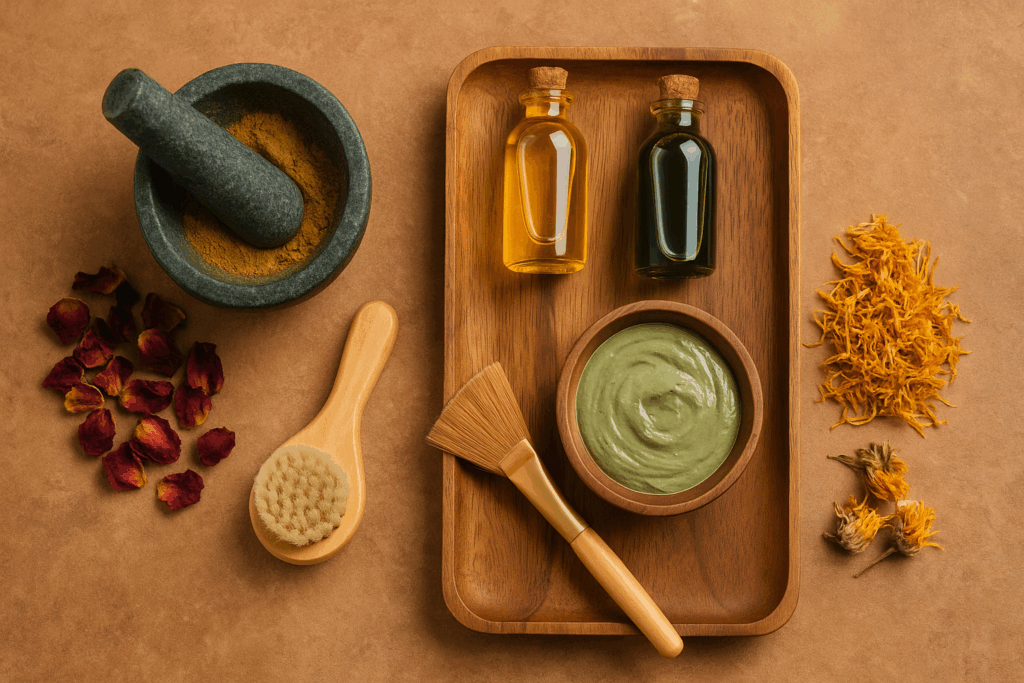
Integrating Natural and Ayurvedic Elements into the 5 Step Skincare Routine
For those drawn to more traditional systems of healing, the 5 step skincare routine can be enriched with principles from Ayurveda or botanical medicine. Cleansing with oil-based products like sesame or jojoba reflects the Ayurvedic practice of Abhyanga, which emphasizes lymphatic movement and skin rejuvenation. Toners made from rose hydrosol or witch hazel echo ancient purification techniques. Herbal treatments featuring turmeric, licorice, or neem can be used in the treatment phase to address acne or pigmentation with gentle efficacy.
Moisturization through plant butters or fermented oils, such as ghee or moringa oil, supports barrier restoration while adding a layer of ancestral wisdom to the ritual. Finally, sun protection can be enhanced with natural antioxidants like raspberry seed oil or green tea polyphenols, which complement but do not replace modern sunscreens.
Combining evidence-based dermatology with time-honored wisdom allows for a uniquely tailored approach. It also reinforces the concept of skincare as both art and science, ritual and responsibility.
Seasonal Adjustments Within the 5 Step Skin Care Routine
The skin’s needs are not static. They shift with the changing seasons, hormone cycles, geographic location, and life stages. Winter calls for richer creams and barrier-supportive serums, while summer may necessitate lighter textures and more rigorous sun protection. Hormonal fluctuations related to menstruation, pregnancy, or menopause may alter sebum production and skin sensitivity, requiring temporary modifications to the routine.
It is vital to listen to the skin and treat the 5 step skincare routine as a dynamic framework rather than a rigid prescription. This adaptability ensures that the practice remains relevant, effective, and aligned with the individual’s evolving needs.
Frequently Asked Questions: Deepening Your Practice with the 5 Step Skincare Routine
Why does skin sometimes worsen when starting a new 5 step skincare routine?
When transitioning to a new 5 step skincare routine, it’s not uncommon for the skin to experience an adjustment period, sometimes called “purging.” This temporary reaction often occurs when active ingredients like retinoids, alpha hydroxy acids, or vitamin C begin accelerating cell turnover. As underlying congestion surfaces, breakouts may increase before the skin stabilizes. It’s important to differentiate purging from irritation; the former is localized and short-lived, while the latter typically involves widespread redness or discomfort. Maintaining consistency while monitoring your skin’s response helps determine whether to continue or reassess the products in your 5 step skin care routine.
Can a 5 step skincare routine be beneficial for mature skin?
Absolutely. A 5 step skincare routine offers structure that can support the evolving needs of aging skin. As we age, collagen production decreases and the skin’s barrier function weakens, making targeted treatments and moisture retention increasingly important. By selecting serums rich in peptides, antioxidants, and retinoids, mature skin can benefit from improved elasticity, texture, and resilience. The consistent layering of actives, especially when coupled with sun protection, helps address age-related concerns like pigmentation, sagging, and fine lines. This routine becomes a daily investment in graceful aging and skin integrity.
How does climate affect the effectiveness of a 5 step skin care routine?
Climate plays a significant role in how products perform within a 5 step skin care routine. For instance, high humidity can increase sebum production, necessitating lighter formulations and potentially stronger exfoliants. Conversely, colder, drier climates strip moisture, making thicker emollients and hydrating serums essential. Wind, UV exposure, and environmental pollutants can also influence which ingredients are needed to fortify the skin barrier. Seasonal adjustments are often required to maintain efficacy, such as swapping a gel-based moisturizer for a cream or using calming agents like panthenol during winter. Understanding climate interplay helps personalize and optimize the 5 step skincare routine for year-round success.
Is it possible to overdo a 5 step skincare routine?
Yes, while a 5 step skincare routine is meant to be balanced, overuse of certain products can lead to irritation or imbalance. Common mistakes include layering multiple actives that serve similar functions, such as using both a glycolic acid toner and a strong retinoid serum in the same session. This can lead to barrier disruption, redness, and heightened sensitivity. Over-cleansing is another concern, particularly for those with compromised skin. To prevent overdoing it, users should pay close attention to ingredient synergy, rotate actives when needed, and prioritize barrier support with nourishing moisturizers. A minimalist approach within the framework of the 5 step skin care routine can often yield better results.
Can a 5 step skincare routine support mental health and stress relief?
Engaging in a 5 step skincare routine offers more than just physical benefits; it can be a powerful tool for mental well-being. The consistency and structure of a daily ritual help reduce decision fatigue and create moments of mindfulness. The sensory experience—from textures to scents—can stimulate the parasympathetic nervous system, promoting relaxation. Many people find that taking time to care for their skin helps them unwind, particularly when paired with calming music or aromatherapy. In a world increasingly characterized by digital overstimulation, this practice becomes a sacred space of self-connection, reinforcing both emotional and physical resilience.
What innovations are shaping the future of the 5 step skincare routine?
Skincare science is evolving rapidly, and innovations are beginning to reshape the traditional 5 step skincare routine. One major trend is the rise of biomimetic ingredients that replicate natural skin processes, such as lab-grown epidermal growth factors and fermented actives that improve absorption. Another advancement includes smart delivery systems like encapsulated retinol or time-released vitamin C, which enhance potency while reducing irritation. Personalized skincare powered by AI skin analysis apps is also influencing how routines are tailored based on environmental exposure, genetic factors, and even daily mood. These breakthroughs continue to enhance how the 5 step skin care routine delivers results with greater precision and fewer side effects.
How does the 5 step skincare routine compare with minimalist or “skip-care” approaches?
While the 5 step skincare routine emphasizes structure and layering, minimalist or “skip-care” routines aim for simplicity by using fewer products with multi-functional ingredients. Each approach has its merits. The 5 step method allows for more targeted intervention, which can be beneficial for complex concerns such as melasma or rosacea. Skip-care, on the other hand, is ideal for individuals with sensitive skin, tight schedules, or limited budgets. However, minimalism does not equate to neglect—it still requires thoughtful formulation choices and diligent sun protection. Ultimately, the best approach is one that aligns with personal goals, skin needs, and lifestyle preferences.
Are there cultural variations in how the 5 step skincare routine is practiced?
Cultural heritage significantly influences skincare philosophies, and the 5 step skincare routine can reflect regional adaptations. For example, in South Korea, double cleansing with an oil and water-based cleanser is a core practice, emphasizing gentle removal of impurities. In Ayurvedic traditions, botanical oils like neem or sandalwood are used during the cleansing and moisturizing stages, bringing a spiritual dimension to the routine. Western routines often emphasize active-based serums and clinical efficacy, while French skincare tends to focus on barrier integrity and soothing ingredients. These cultural nuances expand the definition of a 5 step skin care routine and offer global inspiration for personalized care.
How can men benefit from adopting a 5 step skincare routine?
While skincare has traditionally been marketed toward women, men can benefit greatly from adopting a 5 step skincare routine. Male skin tends to be thicker, oilier, and more prone to enlarged pores due to higher testosterone levels. This makes cleansing and exfoliation particularly important. Shaving also creates micro-abrasions that increase sensitivity and require healing support from moisturizers and calming serums. By integrating a consistent routine, men can prevent ingrown hairs, reduce irritation, and maintain a healthy skin barrier. Additionally, skincare rituals can enhance body image and self-esteem, making it a valuable component of holistic male wellness.
Should the 5 step skincare routine be adjusted during travel?
Travel often introduces new environmental stressors—dry airplane air, unfamiliar water, or climate shifts—that warrant temporary adjustments to a 5 step skincare routine. It’s advisable to focus on core functions: gentle cleansing, hydration, and sun protection. Miniature or travel-sized versions of your usual products can maintain consistency while saving space. Including a facial mist or extra layer of moisturizer during flights can help combat dehydration. Avoid introducing new actives while traveling, as your skin may already be more vulnerable to irritation. With small, smart tweaks, the integrity of your 5 step skin care routine can be preserved across time zones and terrains.
Closing Reflections on the Power of a Consistent Skin Care Ritual
In essence, the power of the 5 step skincare routine lies not only in its biological outcomes but in its symbolic resonance. It is a daily reaffirmation of self-worth, a quiet rebellion against neglect, and a commitment to embodied wellness. Each step, from the first cleansing moment to the final layer of sun protection, offers a micro-moment of care that accumulates into long-term transformation.
For those seeking to align beauty with well-being, this routine offers a roadmap. It is precise yet flexible, scientific yet soulful. And in an increasingly chaotic world, it offers a moment of clarity, a return to the self, and a ritual worth preserving.
Further Reading:
My 5-Step Morning Skin Care Routine for Glowing Skin